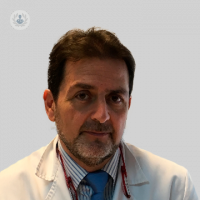Treatment of endometriosis
Written by:Treatment for endometriosis must be personalized, considering the totality of the symptoms and the impact the disease and proposed treatment will exercise on quality of life of the patient. Should be directed to the therapeutic treatment of Pain and the restoration of reproductive function by eliminating tumor cells of endometrial implants and the reconstruction of the pelvic anatomy altered. No treatment has been achieved to date, avoiding the eradication of disease progression or recurrence. We must remember that the endometriotic lesions can progress, park or back.
No indication of treatment in an asymptomatic endometriosis. One should consider specific treatments for endometriosis pain in cases of affectation of the quality of life in selected cases Infertility and in the presence of complex masses in the ovaries.
Endometriosis has been historically considered an endocrine process on the mistaken belief that low levels of estrogens could control the development of the disease. There is no scientific evidence that the extirpation of the pelvic organs and low levels of estrogen definitely eliminate the disease. The histological endometriosis may exceptionally be active and symptomatic in the presence of low levels of estrogen in postmenopausal and some of these patients need an intervention.
The surgical strategy should be based on the clinical situation of each patient (pain and sterility ), age, reproductive desire future and previous treatments.
Medical Treatment
The endometriotic lesions are not always the only etiology of pain experienced by patients. Multiple physical and psychological factors also may influence the importance of pain. This may mask personality disorders and psychological burden may reduce treatment outcomes. A multidisciplinary team ( gynecologist, specialist pain unit, psychologists and psychiatrists ) should evaluate these patients.
The initial recommendation to treat pain is a hormonal medical treatment for ovulation and decrease the production of estrogen. In case of non-response should be carried out a diagnosis of certainty through an evaluation by laparoscopy with histological confirmation of the presence of endometriosis. Medical treatment, based on the historical grounds, has focused on the use of medical castration with patterns of estrogen - progestogens, danazol and GnRH analogues. Although these drugs can induce temporary quiescence of active lesions at the cost of avoiding the ovulation and potential fertility, have proven ineffective, poorly tolerated with side effects and a high relapse rate. None has managed to establish a superiority over the other in terms of reduction of implants in terms of rate of recurrence or the pregnancy rate obtained.
Use of anovulatory with unique progestin, especially the use of IUD of levonorgestrel and since its introduction in 2013, the use of Dienogest orally, may be useful for the symptomatic treatment of endometriosis and even long -term causes a slight decrease in the size of the rectovaginal lesions and endometriomas in women without an immediate desire for offspring and can prevent or minimize the number of surgeries with a low prevalence of side effects.
Most of the authors conclude that there is limited evidence on whether the contraceptives hormonal reduce pain after the Surgery with endometriosis. However, given the limited side effects of this therapy is usually recommended its use as permanent postsurgical treatment for all patients until they reach menopause or when you wish to seek gestation, either naturally or by techniques assisted reproduction.
Surgical Treatment
Today, the laparoscopically is considered as correct for the approach via the ovarian endometriosis, peritoneal and pelvic - deep ( with involvement of other organs: rectovaginal, bladder and / or ureteral ). Treatment should consist of the extirpation of all endometriotic implants or lesions, partial resection of the bladder, ureter or bowel may be needed.
The first surgical approach is crucial for the forecast. Incomplete treatments reduce the fertility and increase the risk of persistence or recurrence.
If you suspect the presence of deep endometriosis laparoscopy practice for the diagnosis or treatment of endometriomas exclusive is not recommended, but the patient should be referred to specialized units of reference for optimal treatment of first intention. In newer units run by specialized gynecologists endometriosis is also available adequate communication and advice from colorectal and urologic surgeons involved with the disease.
In the literature of the past 25 years the rate of recurrence is estimated varies between 2-47 %. This rate is cumulative and increases with greater follow-up period, so that the youth of the patient proves to be the main factor of recurrence.
Conclusion
Endometriosis has been chosen in some international forums such as&ldquo, the challenge of our time&rdquo ;, because, despite the wealth of scientific information published annually, the etiology or origin of the disease remains unresolved, its pathology is discussed and in many cases there is a lack of consensus on treatment.
The&ldquo,&rdquo magic pill;for the treatment of endometriosis one that would ease the pain and cure infertility without inhibiting ovulation or menstruation without side effects. This would entail a change in the current management of endometriosis, as it might leave the complex surgery in favor of medical treatment. However, to date this medicine does not exist.
Optimal deep endometriosis surgery can cure up to 50 % of patients and lead to elimination of tuning in between 60-95 % of cases if performed by appropriately trained surgeons in multidisciplinary specialized units. Women in these units will be able to receive the help needed to understand this disease, now recognized as disabling our society and administration and in which, despite a successful and complete treatment, the total disappearance of their symptoms is not always possible.



